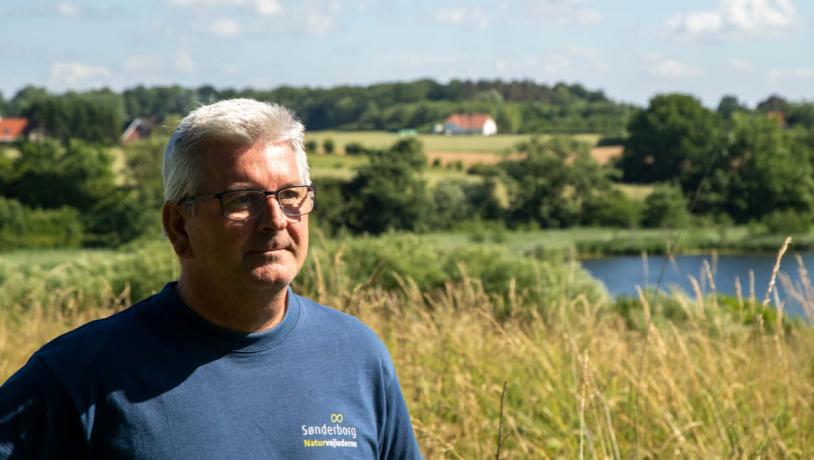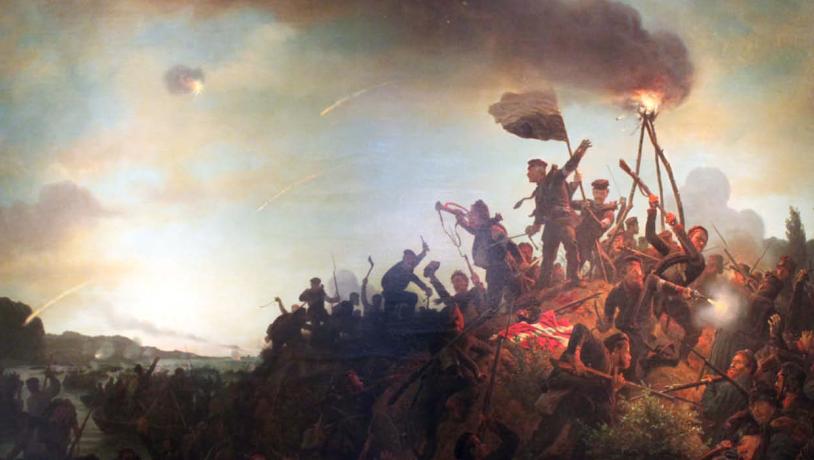Nydamstien
On the Nydam Trail, you don't just experience beautiful nature, here you also encounter both ancient and wartime history.

If you like a manageable walk in a Danish coastal beech forest with several unique historical relics, then Sottrup Storskov may be just the thing.
Nature guide Jens Jørgensen recommends a trip to the historic coastal forest Sottrupskov, where one of the largest historical events in Denmark's history took place on the night of 29 June 1864.
The forest is located on the west side of the beautiful sound Als Sund and belongs for the most part to the estate Sandbjerg Gods. There is a well-accessible hiking trail all the way from Sottrupskov to Sandbjerg, which is also part of both the Alssund Path and the Nydam Path, if you are into a little longer walks. If you want a trip of a few kilometres you can drive down to Sottrupskov and park here.
Already here you can sense the historic touch in the form of the fine old houses where there used to be tile shipping, fishing village and port of call for the ferry connection from Sønderborg to Aabenraa until 1920. Go south from the parking lot along the water, where you come to the exhibition house and the Naust and home port of Nydam Tveir. This ship is an exact replica of the Nydam boat, a very well-preserved sacrificial boat from the Iron Age, found in the bog, Nydam Mose. The original can be seen at Gottorp Castle in Germany.
From the Naust you can use a staircase that leads up into the forest, where the footpath leads you south along the coast among beautiful old beeches that go almost completely into the water. In the forest, depressions are seen in several places and run down towards the water. These are cannon positions and loading ramps for rowing boats from the war in 1864, where the Prussian forces on 29 June 1864 rowed over Als Sund and defeated the Danish army, after which Denmark had to relinquish Sønderjylland until the reunification in 1920.


The tree species distribution is quite typical of an East Jutland deciduous forest and offers good conditions for flora and fauna due to good soil conditions, precipitation and minimal risk of frost during the growing season. Wildlife also thrives and you can often, among other things see roe deer or hear the woodpecker chopping in the decaying trees. Various waterfowl can also be observed out on the sound, and if you are lucky you may see the common kingfisher flying along the shore. At the southeastern point of the forest, you can choose to turn around or continue along the path until you reach the mansion Sandbjerg Gods. This beautiful property has its very own history which goes back to Duke Hans the Younger and up to today where the buildings are owned by the University of Aarhus and are used as course property.
If you have reached Sandbjerg, you can just make a small detour to Troldhøj by Sandbjergvej. According to a legend, a small nisse (a mythological creature from nordic folklore) called Nis Puk lived here, who could often be seen lying and sunbathing on the mound at noon. Not everyone was safe with Nis, but it was known that he did not do good people anything. So do not hesitate to visit the mound which has probably also been a place of trial (gallows hill).
Have a nice tour
Jens Jørgensen
Nature guide in Sønderborg Municipality
Explore more natural areas, activities, and wildlife species with recommendations from the nature guides in Sønderborg Municipality.